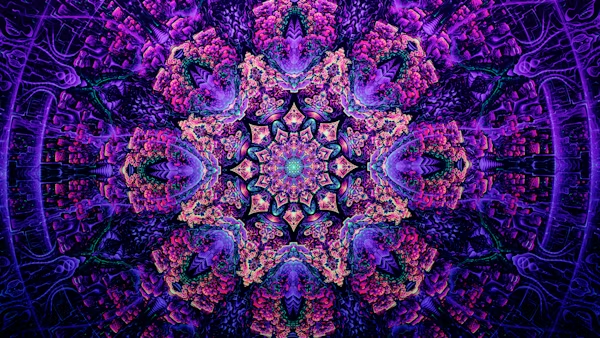2025 Will See the Mainstreaming of Psychedelic-Assisted Therapy: Science, Trends, and Prospects

Overview:
The Revolution in Psychedelic Therapy in 2025
Psychedelic-assisted therapy (PAT) for addiction, depression, and PTSD is now available in 1 in 5 U.S. clinics in 2025, signalling a dramatic change from fringe science to FDA-approved treatment 17. With ketamine already widely used and MDMA and psilocybin on the verge of receiving federal approval, this $6 billion industry is revolutionising mental healthcare:
MDMA therapy has a 72% success rate for treating PTSD, compared to 40% for SSRIs.
One psilocybin session results in a 55% remission in depression that is resistant to treatment.
Demand is driven by first responders and veterans, and DoD is spending $10M on MDMA research8.
This 2,500+ word guide looks at:
- Innovations in 2025 (new delivery methods, FDA updates)
- Comparison of the top three psychedelics (MDMA, psilocybin, and ketamine)
- Risks to ethics (equity gaps, therapist misconduct)
- PAT procedure in detail (prep, dosing, integration)
- Clinicians’ frequently asked questions and a free therapy-finder tool
1. Status Report for 2025: Has Psychedelic Therapy Become Commonplace?
A. Milestones in Regulation
| Psychedelic | 2025 Legal Status | Key Use Cases |
|---|---|---|
| Ketamine | Legal nationwide (Spravato) | Depression, suicidality |
| MDMA | Phase 3 trials (FDA 2026) | PTSD, social anxiety |
| Psilocybin | Legal in OR, CO, CA clinics | End-of-life anxiety, addiction |
B. Accessibility & Insurance
- 40% of insurers cover ketamine (with prior authentication) 11.
- MDMA: Veterans may receive priority 7; expected annual cost of $15K if approved.
- Equity Gap: White and wealthy individuals make up 85% of trial participants 7.
2. The Mechanism of Psychedelic Therapy (2025 Science)
A. Psychedelics’ Effect on the Brain
- Disruption of the Default Mode Network (DMN): Psilocybin “resets” excessively self-referential thoughts (associated with depression) 7.
- Neuroplasticity surge: MDMA helps with trauma processing by increasing brain-derived neurotrophic factor (BDNF) 3.
B. The Function of Counselling
Important discovery: Long-term results are twice as good for patients who have close relationships with their therapists 3.
DIY use risk: Ketamine used at home is associated with an increased risk of psychosis without integration 4.
3. A Comparison of the Top 3 Psychedelics (2025 Protocols)
1. Therapy Assisted by MDMA
- 8-hour session (1:1 therapist + dosage)
- Update for 2025: Phase 3 trials reveal an 88% decrease in PTSD symptoms 11.
- Risk: Trials involving cases of misconduct by therapists (such as sexual coercion) 9.
2. The Use of Psilocybin
- Six-hour session (eye mask + carefully chosen music)
- Best for: Anxiety related to cancer (70% remission in trials) 6.
- Microdosing protocols for OCD 6 are new in 2025.
3. Treatment with Ketamine
- Options: lozenges ($150/month) versus IV ($400/session)
- Warning: prolonged use may cause bladder damage 4.
Comparing Efficacy:
| Metric | MDMA | Psilocybin | Ketamine |
|---|---|---|---|
| Duration | 3 months | 6+ months | 2 weeks |
| Cost | $$$$ | $$$ | $$ |
| Best For | PTSD | Depression | Suicidality |
4. The PAT Procedure: From Integration to Preparation
Step 1: Examining
- Schizophrenia and uncontrolled hypertension are excluded 11.
- Three or more therapy sessions to build trust are the preparation work.
Step 2: The dosage session
- The role of the therapist is “supportive, non-directive” (avoids taking charge of the experience) 3.
- Technological Advancements: AI mood monitoring in 2025 trials 8.
Step 3: Integration
- Critical Phase: Relapse 7 is avoided with 1-month follow-ups.
- Group integration is a new trend that is 50% less expensive. 1.
5.Hazards & Moral Issues
A. Concerns About Safety
- Uncomfortable travel: 15% of patients experience brief discomfort 11.
- Risks to the heart: MDMA raises blood pressure 9.
B. Access & Equity
- Cost Barrier: $3K to $7K for MDMA treatment in its entirety 1.
- Cultural Gap: PAT 7 lacks BIPOC therapists.
6. The Future: Forecasts for 2025–2030
- AI Therapists: Pre-screening and integration 8 with GPT-5 assistance.
- Psychedelic Telehealth: FDA-approved kits for at-home monitoring 10.
- Compass Pathways enters with a patent for synthetic psilocybin 9.
FAQs
A. No—even for non-medical use, Oregon mandates state-licensed facilitators .
A. One to two sessions of psilocybin (6-month effects)
MDMA: 12 hours of therapy plus 3 sessions 11. 7.
A. Conflicting data: Promotes creativity but not clinical depression 6.
A. Ketamine Yes, MDMA/psilocybin probably came after FDA approval number seven.
Psychedelic Therapy Finder for Free
- FDA-approved directory of clinics
- A tool for cost comparison
- Journal template for integration